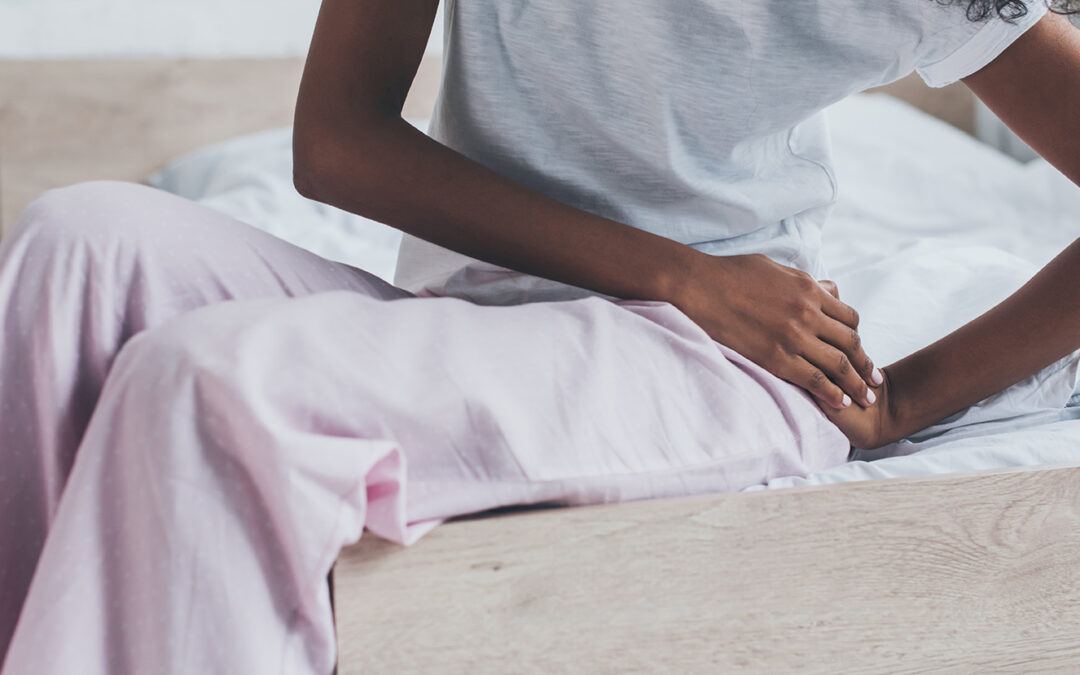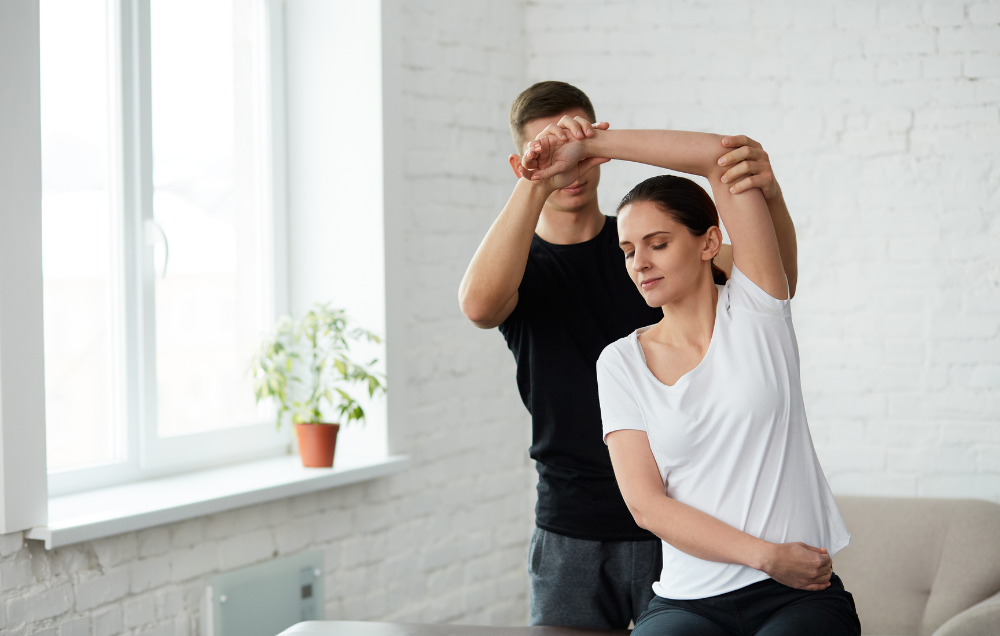Contents
Everything in the body is connected. For example, you could be feeling a headache due to a neck injury. Or you may feel back pain that stems from a foot abnormality that affects your gait. But did you know that there’s a piece of tissue in your leg that could be the source of your hip pain?
You have a band of connective tissue that runs along the outside of your leg to help provide support to the outside of your knee joint. The tissue is called the iliotibial band, or IT band. If you’re experiencing pain in your hip, there’s a chance that the IT band is the source of the problem.
We’ll start off by talking about the potential connection between hip pain and the IT band. We’ll also discuss stretches that can help alleviate the pain and restore your mobility.
How your IT band may be connected to your hip pain
The iliotibial band, or IT band, starts at the outside of your hip and runs down along your leg to just below your knee joint on the outside of your shinbone. By working with your thigh muscles, the IT band can provide support for your outer knee joint.
The IT band plays a large role in the hip’s overall function. It works to stabilize the hip while walking or running as well as rotate, extend or abduct the hip.
The most common cause of hip pain that stems from the IT band is iliotibial band syndrome. This is an overuse injury that develops when the band of tissue becomes tight or irritated. It can cause pain and swelling because the band is causing friction at the top of the hip. Other symptoms include knee pain, popping sensations and a snapping sound.
While IT band syndrome can cause hip pain on its own, it can also lead to hip bursitis, or inflammation of the hip bursae, which are fluid-filled sacs that work as cushions between the soft tissue and bone. There are two major bursae located in the hip; they can become irritated due to overuse or repetitive motions. A tight IT band can also cause friction against the bursae, leading to hip pain and swelling.
If you’re feeling persistent or worsening pain, be sure to talk to your doctor about your concerns. They can determine if your hip pain is linked to IT band syndrome, hip bursitis, or a different medical condition or injury.
Stretches that can help hip pain from your IT band
If you feel hip pain from your IT band, it may be because the band has been stretched too tight. This issue is common among athletes or people who live active lifestyles, as they are overusing the band. It’s often seen in people who do activities like cycling or distance running. If there isn’t enough stretching before or after, it can lead to IT band issues. Those stretches can also be beneficial in alleviating current hip pain and related symptoms.
Stretching exercises are an essential part of hip pain treatment that’s linked to the IT band. With safe and effective stretches of the muscles surrounding the band, you can increase the flexibility, mobility and overall function of your hip. A physical therapist can guide you through the best exercises that you can practice between sessions, before working out, or in the future if the hip pain flares up.
It’s important to note that while stretches can be helpful for alleviating hip pain, the best results come from a combination of different treatment options, such as resting at home and receiving manual therapy by a physical therapist.
Here are some stretches that a physical therapist may recommend to help your hip pain and mobility, such as IT band syndrome or hip bursitis. They will instruct you on how long to hold and repeat each exercise.
- Standing quad stretch — Stand with your feet hip distance apart. You can use a solid surface for support, such as a wall or chair. Gently grab your right ankle with your right hand so that it’s bent behind you with your foot near your buttocks. Be sure to squeeze your glutes and tuck your pelvis to properly stretch the quad. Hold the stretch for up to 45 seconds, or as directed by your physical therapist, before switching to your left leg.
- Seated crossover twist — Sit on the floor with your legs extended in front of you. Place a hand next to either hip with your fingers facing forward. Bend your right knee and cross it over your left leg. Your right foot should be next to your left knee. Gently rotate your body by putting your left hand on the bent knee. Hold the stretch for up to 45 seconds, or as directed by your physical therapist, before switching to the left leg.
- Standing IT band stretch — While standing, cross your right ankle over your left. Lift your left arm over your head and gently stretch it to the right. You can use a chair or wall for additional support if needed. Hold the stretch for up to 45 seconds, or as directed by your physical therapist, before switching to the opposite leg.
- Supine IT band crossover — Lie on the floor with your back flat and your legs bent. Your feet should be planted on the floor. Lift your right leg. Take an exercise band or towel and wrap it around your right foot while keeping your leg straight. Gently move the elevated leg to the left side while keeping your hips on the floor. Hold it for up to 20 seconds, or as directed by your physical therapist, before bringing it back down to resting position. Switch to the left leg.
Your therapist will determine the stretches that work the best for your symptoms as well as your overall wellness goals. If you’re experiencing hip pain from your IT band, you should avoid any exercises that involve excessive squatting, walking on uneven surfaces or long-distance walking.
Lattimore Physical Therapy can treat your hip pain that’s connected to your IT band
Your hips play a big role in many different everyday tasks, from walking your dog in the park to climbing up stairs in your house. They also help you stay active and able to participate in your favorite activities, such as going for a run on the weekends or playing basketball with your friends. When you feel an ache in your hip with each movement, it can make you want to do nothing until the pain goes away. Since that’s not a realistic course of action, talking to your doctor about the potential issue is the right first step.
If your hip pain is linked to your IT band, such as IT band syndrome or hip bursitis, it’s important to figure out the best treatment options to alleviate your symptoms. Along with therapeutic stretches, your hip pain can be addressed with other options such as manual therapy. At Lattimore Physical Therapy, we have 30 therapists who have earned a Certification in Orthopedic Manual Physical Therapy (COMT), meaning that they specialize in treating neuromuscular skeletal disorders with manual therapy. There is one COMT in nearly every Lattimore PT clinic.
Contact our team today for more information about hip pain connected to the IT band or to schedule an initial appointment with a physical therapist.



